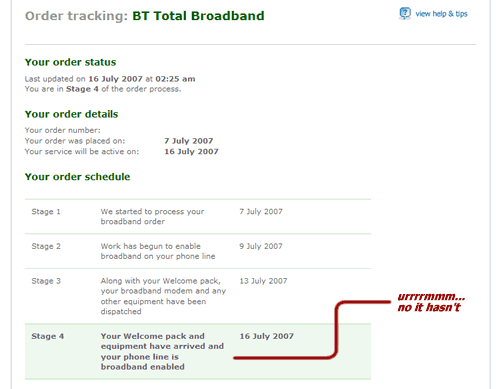Duplication and lack of clarity: That’s most corporations right?
A couple of weeks ago the share price of BP plummeted because the CEO “did a Ratner” and criticised the company. Essentially he was criticising his company for being inefficient. “There is massive duplication and lack of clarity of who does what”. Yet is this so uncommon? Spend some time in most FTSE 100 company and I’m sure you’ll soon discover duplication, inefficiency and waste. It seems to be the consequence of scale; a growing company gets organised around business units and these inevitably become inwardly focussed and support a silo mentality. These silos soon cease to have a single minded focus upon the stakeholder that matters most, the customer, and instead focus upon the good of themselves.
For example, the organisation may have a number of different products. These are organised into product lines with each product having its own targets. The product lines then start competing against each other; it is not in the product managers interest to consider anything outside increasing the profitability of her own product line. So if this means cannibalising the market share from other product lines so be it. Her bonus depends upon the success of her products.
Undoubtedly she needs IT support. Here comes more inefficiency. Whilst a similar technology may be used by another part of the business, it does not entirely meet her requirements. So a new product is built. Throw in outsourcing and inefficiencies are abound. It is not in the interests of the vendor to strive for simplicity. (Read PG’s excellent analysis of the problem with outsourcing IT).
Then you’ve got “channel” The Web Team, the Mobile Services team, Telephony, Retail Stores… Again, each has their own P&L and targets, each competing against each other. The talk may be of a seamless cross channel experience, but when the staff in the Stores are remunerated based upon sales they make, what is the incentive to direct the customer to the website to complete the transaction? Better loose the sale than do that.
Once a product has been sold it requires support – another bunch of stakeholders with their own (muffled) agenda. Customer acquisition is more costly than customer retention, yet the focus is usually upon the former, regardless of how wasteful this may be.
And what of the “Gold” team, looking after our “best” (read most profitable) customers. Another bunch of stakeholders with their own priorities, requirements and bottom line. All different parts of the organisation competing against each other. It’s not a team effort with a common goal (maximising customer and shareholder value), it’s a battle lining business unit against business unit with a common enemy of IT.
Is there an answer to organisational inefficiencies? There’s a solution to everything if you’ve got enough time and money. But for a start I’d love to know of a company that has scaled and has maintained a true focus upon the customer. That doesn’t internally compete for their customers share of wallet. That is transparent and shares knowledge effectively, where duplication is unknown. That uses IT strategically to support the business meet its common goals. An organisation that remunerates according to total value earned regardless of where it was fulfilled. An organisation that, regardless of the fluff in the annual report really does deliver value for the shareholder and customer, and waste is the common enemy.
